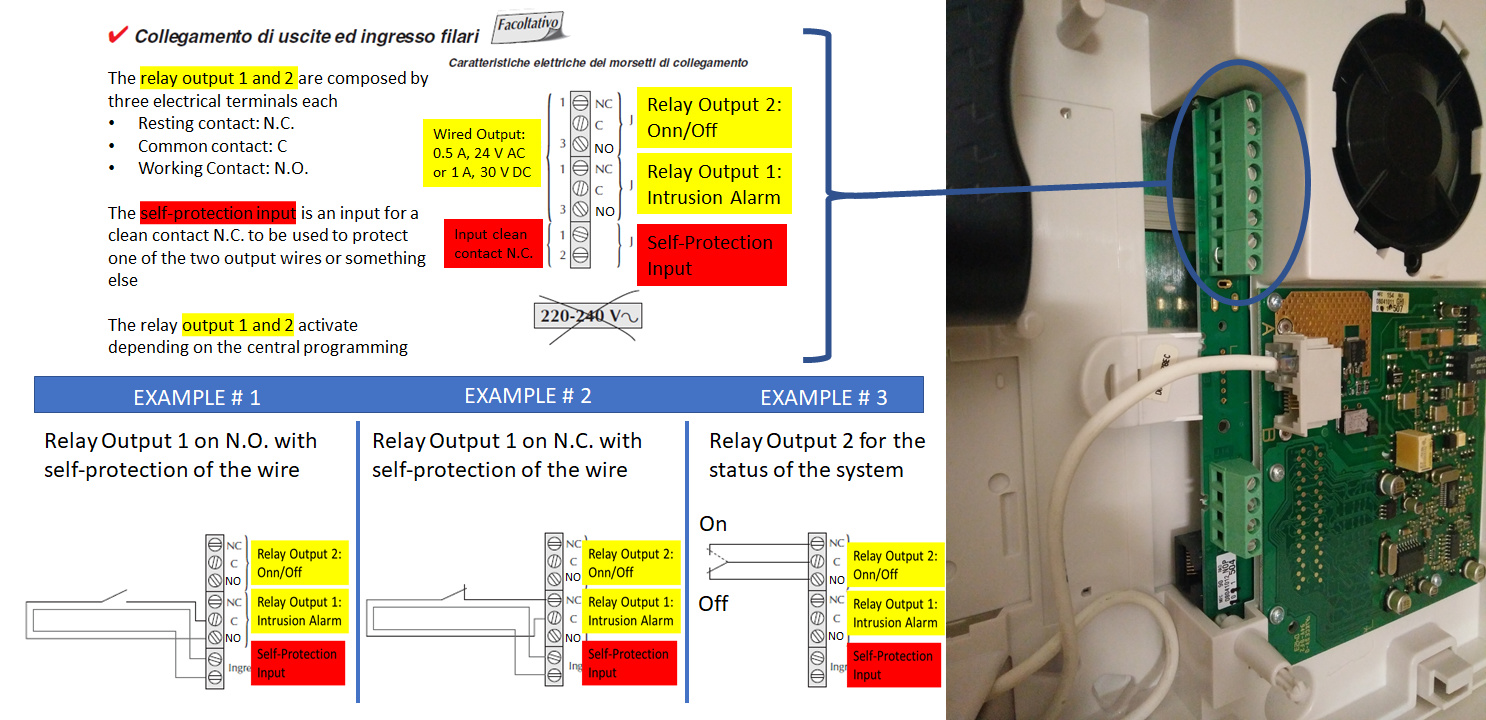I have an “old alarm system” (about 15 years), which has wireless motion sensors and wireless siren… (http://www.antifurtologisty.it/S310-22I.htm 1 - I cannot find an english version of it)…
The brand has now been bought by Hager (https://www.hager.com/) and it has since dismissed…
Nothing wrong with the system, it has a cantral with incorporated siren, keypad, and Phone connectors (I can manage the system via phone too - wired to the home phone line)… all the sensor (including an external siren( are wireless)…
I was wondering if it is possible to retrofit the system and make it “smart/connected” so I can see status/manage the system itself with my mobile…
I have done some researches on the system and nothing much could be founded... for now I have found some simple example on how to use dome electrical connections that are in the central system unit:

The only example that make sense to me is EXAMPLE # 3, in order to “read” the system and detect if is is ON or OFF… in this case I would connect somehow Output Relay 2 to the Arduino (someone suggested me a NodeMCU that could talk with a RPi3-openHAB) and the system would know the status of the alarm…
Anyone can help me understand what are the EXAMPLE #1 and #2 for?
I am here trying to look for help and try to understand how to use the existing connection on my alarm system central unit, in order to make the all system "smarter"...
Questions:
1)How do I monitor I/O from Alarm System Central Unit? (what I am guessing is to connect the existing electrical contacts (as per picture OUTPUT relay 1, OUTPUT relay 2 and auto-protect INPUT) to an arduino/nodeMCU device and see what's goign to happen when I arm the alarm system, when I disarm it and when the alarm detect an intrusion... the problem is that I would not have a clue how to get thin info out of the overall system....
2) how can the I/O contacts be smartly used in an automation/smart project?
3) is that true that a NodeMCU would be the best option?
4) which pins should I use in a "standard NodeMCU" ?
I am an absolutely newbie in this world and therefore, please be patience with my silly questions
Thanks All
Ivan